90 Kilometres Of Freedom
The brutal Comrades Marathon helped unite apartheid-era South Africa, and still keeps hope alive in the hearts of runners.
As the sun crests over the horizon, casting a pink glow over the low-slung fog and cooking-fire smoke, Sindi Magade emerges from the slumped, one-room tin shack she shares with her three children and a nephew, and starts to run.
Her undulating 15-K route will take her to the chic, gated development where she works full-time as a domestic worker. Twice every week she traces this route in the morning, the runs forming the core of her training for the 90km Comrades, the world’s oldest and largest ultra.
Sindi, 41, jogs onto a street already thick with commuters, many of them dressed in the reflective blue overalls of the city’s gardeners and day labourers, or the branded blazers of private security companies, the front lines of South Africa’s notorious crime epidemic.
Every morning, on the fringes of every city, a mass exodus like this repeats itself again and again, as residents of the country’s poorest neighbourhoods trudge off to work in the shops, houses, and offices of its richest.
This particular neighbourhood, Diepsloot, sprang up after apartheid ended; a knot of shacks that grew into a village and then into a small city, filled with people looking for jobs in the high-end gated communities nearby.
Sindi moved to Diepsloot in its early years; and nearly two decades later, her neighborhood still has a haphazard, unfinished look to it. There are few paved roads or sewers, and streams of blue-gray liquid flowing from houses and shops carve gullies into the roadside. Piles of garbage slump uncollected on nearly every street corner.
As she reaches the main road out of Diepsloot, Sindi weaves past a long line of dented mini-buses wheezing and heaving their way south toward the developments. By comparison, she looks like she could go forever, her loose, lanky limbs moving with practised ease over trash and broken bottles as she thinks about her six-year-old daughter’s upcoming debate tournament, her teenage son’s soccer championship, the new running shoes she hopes to buy next weekend. “I tell myself, I must push,” Sindi says. “I must do it.”
In many first-world countries, ultra-marathoners are, by reputation and reality, a very specific kind of runner – and a very specific kind of person. It’s a Cape Union Mart–loving, national park–vacationing, 4×4-driving kind of crowd, white-collar, and just plain white. (One 2013 survey of American ultra-runners found that less than 0.1 per cent were black.)
Here in South Africa, ultra-running may be an oddball pursuit, but it’s a far more mainstream kind of oddball. In a country where race and class still cleave society in painful and obvious ways, distance running is a rare experience that seems to transcend both. And at the root of why is the hellishly hilly, stupidly long footrace that Sindi is getting ready to run.
“We just think it’s a bucket-list thing – something you have to do,” says Cheryl Winn, the vice-chairwoman of the Comrades Marathon Association and the 1982 female winner.
That appeals to Sindi. As a runner, she’s not fast, but she’s consistent. The last kilometres of her marathons are often faster than the first. And the deeper she sinks into a run, the more comfortable she feels. “Those longer runs, you can just relax,” she says. “Shorter races are over too fast.”
After a few kilometres in Diepsloot, the city’s grip slackens, and the crowded settlement gives way to rolling brown fields. Sindi jogs past the gates of Steyn City, a massive development that boasts SA’s most expensive house, a garish faux-Italian villa worth nearly R240 million perched high on the hillside above her.
Past Steyn City, the city picks up again, this time as an endless parade of shopping malls and high-end car dealers. Billboards advertise Swedish furniture and personal trainers. When she turns down a residential street in the neighbourhood of Fourways, it’s eerily empty and nearly silent, the only sounds the quiet metronome of her footfalls and the low buzz and snap of the electric fences that encircle the tall walls all around her.
It’s about 8am when Sindi finally reaches the door to the suburban house where she works, which gives her just enough time to shower and change before beginning a long day on her feet – ironing clothes and cooking for the middle-aged white couple who employ her, full-time, for about R5 000 a month. This weekend, she’ll run 40-odd kays; maybe a little more.
All of this, she is hoping, will be enough so that when she finds herself in the inky black of a Durban winter morning a month from now, jostling up against thousands of other runners tensely waiting at the Comrades starting line, she will be ready to face the race that, in many ways, she’s been waiting her entire life to run.
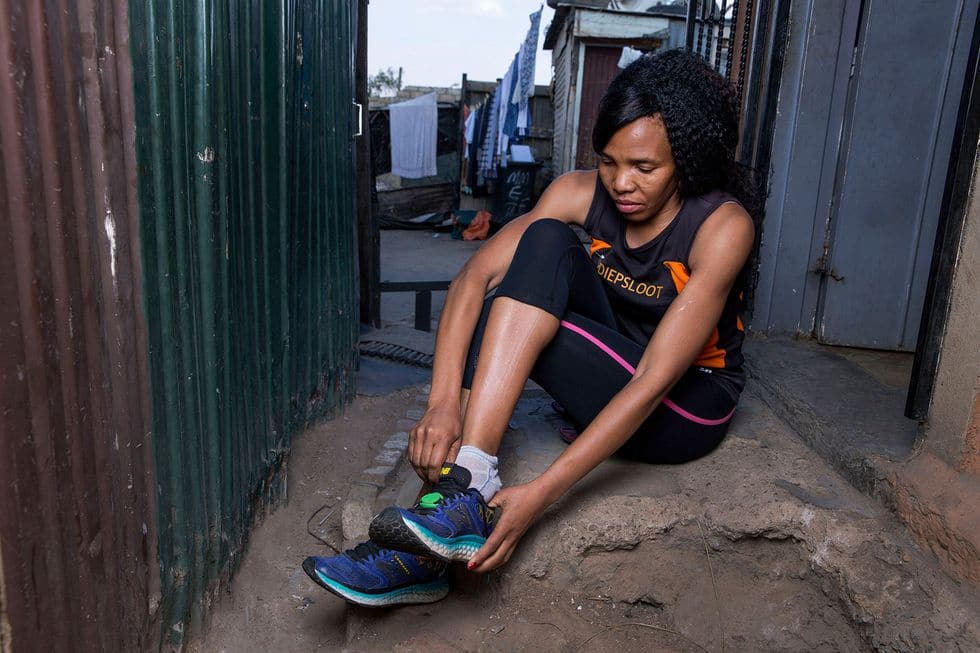
Like any ultra, Comrades is a mean race – though weirdly, it’s also a pretty democratic one. To qualify, runners need simply to run a standard marathon in five hours or less (slower than the median finishing time for either men or women in US marathons last year, in fact). And unlike most ultras, Comrades is run entirely on paved roads, not rocky mountain trails. That, plus aid stations every two kilometres or so and a generous 12-hour cut-off to finish the 90km course, seems ample encouragement to the slow, plodding, or simply ultra-uninitiated.
But that’s where the good news ends. For one thing, Comrades stretches across a parcel of land between the cities of Durban and Pietermaritzburg known as the ‘Valley of a Thousand Hills’ – of which at least eight or nine hundred seem to be part of the racecourse. The race is known for five major ones; each of which, in the words of nine-time Comrades winner Bruce Fordyce, “makes [Boston’s] Heartbreak Hill look like a speed bump”.
Indeed, nearly the entire route, which alternates direction between the two cities each year, is uncomfortably undulating. During years that the race goes uphill, from coastal Durban to inland Pietermaritzburg, the challenge is more aerobic, a battle of lungs and legs. In the years that it goes the other way, the question becomes one of how much pain you can tolerate as you thrash your legs into submission.
But a lonely suffer-fest, Comrades is not. In fact, it’s more like the Boston Marathon run at the FIFA World Cup final during a rowdy New Year’s Eve party. The race is massive – nearly 20 000 runners per year – joyful, and immensely popular. It’s broadcast live on national TV for 13 straight hours on race day, from before the moment the mob of runners first takes off an hour before dawn until after the last runners stagger across the finish line. For nearly the entire route, spectators pack the course two and three and five people deep, some in costume, many with braais and cooler boxes of beer, all improbably excited to watch a bunch of people running really far, really slowly.
And Comrades has another unusual distinction. In a country still sliced apart by segregation, this dizzying carnival is strangely integrated. In a sport so stereotypically un-diverse that ‘marathons’ appears just behind ‘yoga’ and ‘microbreweries’ on a satirical blog called ‘Stuff White People Like’, Comrades actually looks a whole lot like the country around it.
For many South Africans, Comrades was the first non-segregated sporting event they saw. At the height of the anti-apartheid struggle in the 1970s, Comrades began allowing women and black runners.
A few years later, it began appearing in its glorious, tedious entirety on national TV. And though the SABC tried to cut away from shots of blacks and whites sharing bottles of water or consoling each other on the road, it was too late. Comrades was a revelation.
Back then, “black people knew soccer, they didn’t know Comrades”, says Teleko ‘Samuel’ Ralejalla, a 21-time Comrades finisher and prison cook. But “people come [to the race] after they see people they know. In those days we were few, but now we are many”.
For many viewers, the race seemed to neatly shear away all the social pretences of segregation. For an ephemeral moment, it reordered the universe. Gardeners jogged past professors. Construction workers consoled doctors. Black runners hobbled alongside white runners, traversing a distance so long and humbling that it would eventually strip them of any social grace, of any walls between them.
For 90km, they had something that most other days of the year eluded them – a shared goal, and even more important, a shared pain.
Perhaps, in the grand scheme of things, that doesn’t matter much. An ultra marathon, after all, can’t save a country. It won’t reduce income inequality. It can’t turn over centuries of colonialism, or reverse a vicious system of segregation that still hangs low over the country’s present.
But for one day, on one crowded stretch of road, South Africans can hold a mirror to themselves; and see, staring back, the country they’d always hoped they could become.
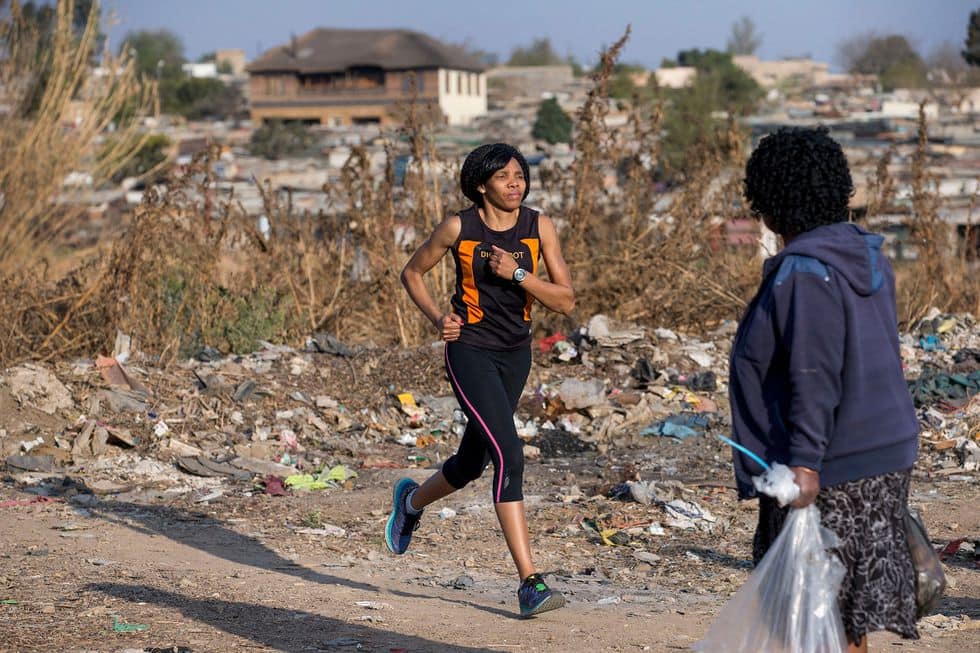
Jonathan Torgovnik
Sports have long played an oversized role in South African history. During apartheid, one of the most visible forms of international protest against the country was sports boycotts. For more than two decades, South Africa was barred from the Olympics (and the FIFA World Cup) because it refused to integrate its teams. And as pressure against the apartheid regime increased in the ’70s and ’80s, its beloved rugby and cricket teams met with protesters and booing crowds when they travelled abroad. So when apartheid ended at last in the early 1990s, naturally, sport was an equally important turf for reconciliation.
You might remember this moment: President Nelson Mandela in the centre of a rugby pitch, wearing a green and gold jersey buttoned awkwardly to the collar. At his back is the roar of 60 000 South African rugby fans; and in front of him, their hero, Francois Pienaar, captain of the national rugby team.
It’s June 1995, and for the first time since the end of apartheid, a South African sports team has won a major international tournament, the Rugby World Cup – and on their home turf to boot. Forget for a second, Mandela’s presence says, that all but one of the members of the squad are white. Forget that most of the fans are, too. For now, for this moment, the country is in this together. It’s our victory. It’s our team.
“Sport has the power to change the world, it has the power to inspire,” Mandela later famously said. “It is more powerful than government in breaking down racial barriers.”
But if rugby was where Mandela made that point most visibly, the president’s real sporting passions lay elsewhere. Though best known for his prowess in the boxing ring, Mandela’s first love was distance running. For most of his adult life, Mandela was a regular jogger – an unremarkable feat, perhaps, were it not for the fact that he did it without ever leaving the 2-by-2.7m prison cell to which he was confined for 18 of his 27 years behind bars.
“Running taught me valuable lessons,” he wrote in his autobiography, Long Walk to Freedom. “Training counted more than intrinsic ability, and I could compensate for a lack of natural aptitude with diligence and discipline. I applied this in everything I did.”
So when Mandela got out of jail, he didn’t just attend rugby matches. He went to Comrades, too.
At the finish line of the 1995 Comrades, one week before the president presented Pienaar with that rugby trophy, Mandela congratulated the two winners – both white – and stood with the race’s organisers, posing for a photo. On every side of him were white men – plus two white women – in crisp blazers embroidered with Comrades logos and purple Comrades ties. These were the people a local newspaper called “the almost exclusively white, male … colonial set which controls Comrades”. But Mandela’s smile was wide and genuine.
Comrades, Mandela would tell a similar crowd at the finish line two years later, had been the dream of a white World War I veteran looking to honour his fallen fellow soldiers – a noble, if narrow, aim. But like South Africa itself, that vision had warped and stretched across the years. Now, the ultra had become a thing that “unites people from all over the country”. Like nearly everything Mandela said in those years, his words felt bigger than their literal meaning. If this race could change, he seemed to suggest, maybe – just maybe – this country could, too.
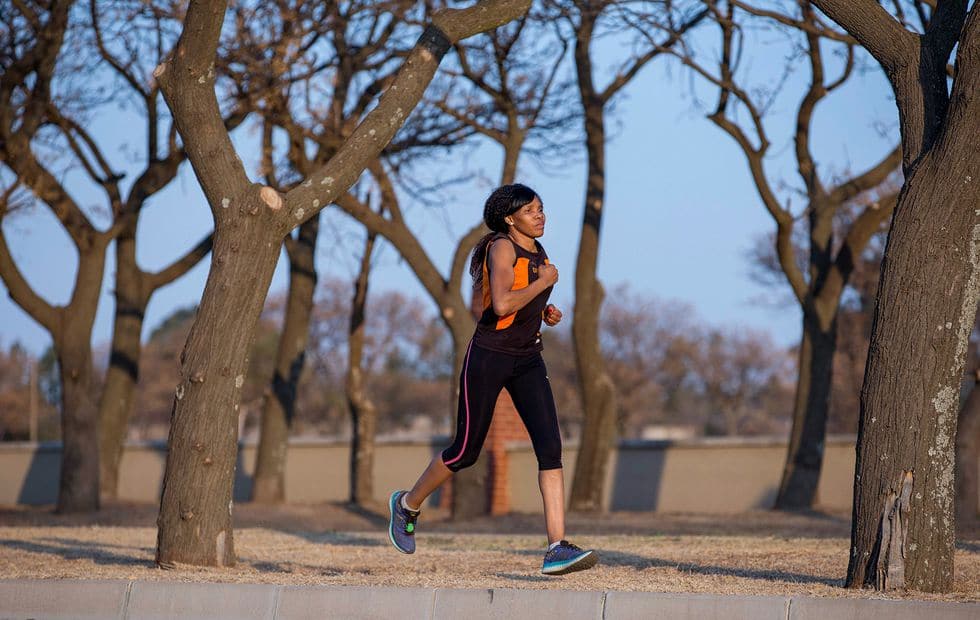
Sindi was born in 1976, the year the old South Africa began to fall apart. That June, police gunned down a group of high-school students in the Johannesburg township of Soweto during a peaceful protest march.
This wasn’t the first time the government had attacked protesters, or even the first time it had killed children in the process. But this particular moment went viral. Jutting out from the edge of a continent of newly independent states, South Africa suddenly seemed a sad and antiquated thing – a living fossil of a colonial era come and gone.
For historians, this moment represents the beginning of the end. But for Sindi, growing up, all of that was a million miles away. In her village in the Eastern Cape, the country’s racial divisions were as heavy and solid as ever. Every January both her parents went away for the year to work for white people in Johannesburg – her mother as a domestic, her father as an airport porter.
Whites were the ones with nice houses and swimming pools. But Kolomane was far removed, a rural village of thatched-roof rondavels scattered across dramatic hills, with lean horned cattle wandering between them.
From the time she was young, Sindi competed in every athletics event her school offered. “I did javelin, shotput, netball,” she says. “I played soccer; and there were no girls playing, so I played with the boys.” And she ran, racing barefoot on a gravel track for 100 or 800 or 5 000 metres. She wasn’t particularly fast, but she liked the feeling running gave her. When you were running, life couldn’t keep up with you. And if it couldn’t keep up with you, it couldn’t hurt you.
And there was a lot, in those days, to run from. From the boys who taunted her mercilessly the day she came to school in her first-ever pair of shoes. They were old high heels, hand-me-downs from the white woman whose house her mother cleaned. Are you trying to be white now? the boys taunted her. Are you a fancy madam now? She was running, too, from the realisation that she would never finish school, that her family simply couldn’t afford it. Later on, running would carry her away from the grief of losing a boyfriend to a mugging gone wrong, and the slow-burning fear she had each day as she sent her kids off to school in a neighbourhood infamous for its violent crime.
In Kolomane, she ran the gravel track. In Cape Town, where she moved after dropping out of high school, it was laps around a sports field. But it was in Johannesburg that the runs began to take on new purpose. In 2000, when she was 24, Sindi relocated to the city and found part-time work as a domestic. But in Joburg, just as in Cape Town, it seemed that she could never earn money fast enough to keep up with the hands that stretched out to take it. Whenever she could, Sindi sent a few rands home to her mother. But often, it was impossible. She was only making about R80 a week, and there were precious few places she could cut corners on expenses.
Then one day it hit her – what if instead of riding a mini-bus taxi 10 kays to work, she jogged? Why not get to work for free? This is the way I’ll save money, she thought.
And so she did. But as Sindi settled into her commute, she began to realise something – she enjoyed it. Other people she’d met who jogged for exercise told her that as the kilometres added up, they grew more and more tired. But Sindi often found the opposite was true. As the kays ticked by in her long, slow runs, she simply sank deeper into a rhythm, relaxing into the sound of her own rasping breaths, or the woosh-woosh-woosh of cars sliding past on the road beside her.
And as life grew more knotted and complicated, running became a clean reset. So when she was offered a full-time cleaning job a few kilometres further from home, she continued jogging there. It saved her a bit of money, yes; but it was also the best way she knew to clear her head and carry on.
And soon running became her out from a crumbling relationship. Sindi had met Zane shortly after she moved to Johannesburg. He was tall and sturdily built, quiet in a way that struck Sindi as deeply
thoughtful. He listened attentively and liked to buy her chocolates sometimes, just to remind her he loved her.
Then the fights began. She enrolled in a course to finish her matric. Zane told her he didn’t like her being out so late with other men. She joined the Diepsloot Athletic Club. Zane complained she wasn’t home to cook dinner. She ran her first half marathon. He said that her leggings were too tight, her shirt cut too low. The accusations came fast and furious, and there was, it seemed, no way to stop them.
One evening in 2007, Sindi was getting into a friend’s car after a running club practice when Zane appeared and charged at them, in a rage, hurling invective. “That was when I decided, I don’t want this life,” she says. The following week, she took her children to her mother’s house, and then went home
to pack up the last of their belongings.
Zane begged her not to leave. Instead, she walked out and never returned.
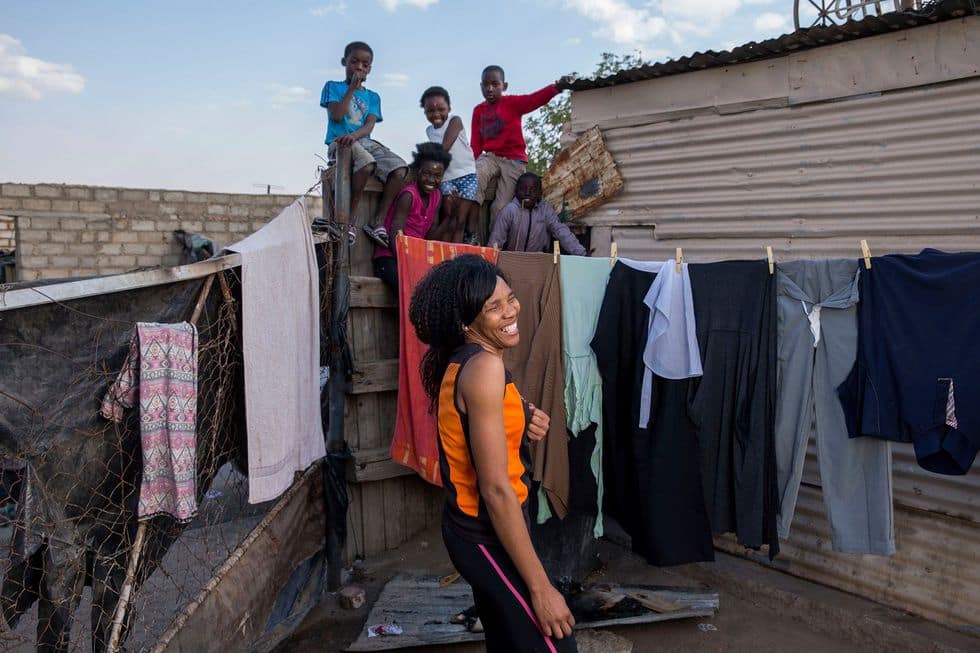
Jonathan Torgovnik
on the day before Comrades, Durban is a sea of spandex. In its hotels and on its streets, in the queues for ice cream at the beachfront promenade and in the blue glow of the slot machines in its vast casino, it looks like the entire city is, at any moment, ready to break into a jog. Tomorrow, more than 17 000 people will do just that, and by now they are nearly all here, many of them slouched in the lobby of the local Hilton, adjusting their Kinesio tape or fiddling with piles of energy gels.
By 7am, when Sindi and 15 other Diepsloot runners start a shake-out jog on the wide ribbon of concrete that stretches along the Indian Ocean in downtown Durban, it is already full of people. Fishermen and surfers head for the water as the last of the late-night revelers stumble off the beach, loud and bleary-eyed and merry.
But those coming off the beach this morning are met with an equally jubilant wall of colour and noise. The packs of Comrades runners move slowly, wearing a rainbow of race-finisher T-shirts. Sindi and her crew greet other Joburg clubs as they pass.
“Randburg!” “Soweto!” “Kagiso!”
“Hello, Diepsloot, hello!”
A generation after the end of apartheid, running clubs, like society itself, are still neatly siloed. They cluster around neighbourhoods, and they look like the places they come from. Most Diepsloot members work, as Sindi does, in more affluent adjoining neighbourhoods. Several are security guards. One is a teacher. Another, a broad-shouldered middle-aged man named Ali, drives an armoured van. Almost all train for ultras by run-commuting.
Occasionally, they meet up for a rambling group run along the flanks of Diepsloot, past sand mines and guest farms and kilometre upon kilometre of wilting brown veld.
But despite segregation along geographical lines, there’s a flickering, ephemeral camaraderie that club culture seems to build among runners themselves. During a big-city marathon in the US, runners might draw strength from crowd support – friends and family with silly signs, random spectators calling out names on race numbers. But runners who don’t know each other don’t often chat among themselves. South African runners, conversely, are – for those few minutes or hours on the road – a tribe. They befriend each other and offer condolences. They share gels and crack jokes.
“It feels like we all like to struggle in this country,” says Sindi’s teammate Ali.
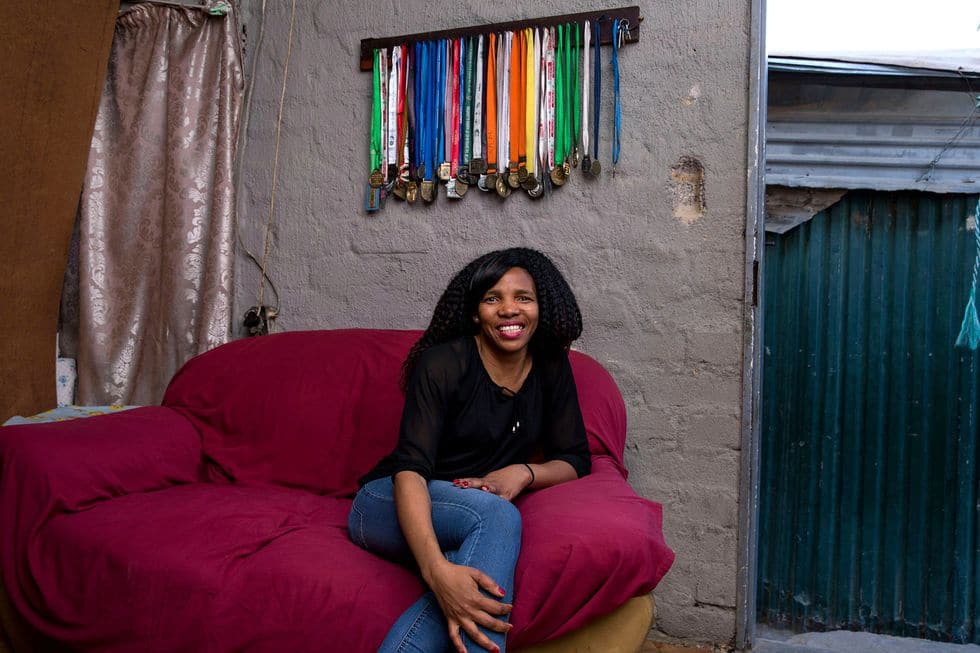
Comrades was never supposed to be political. But really, it always has been – ever since 1923, the third year it was run, when a bank typist named Frances Hayward showed up on the starting line next to all the men in “a very businesslike green gymnasium costume” and then ran the whole race without a number, just to show that a woman could. A black runner named Robert Mtshali did a similar thing in 1935. And over the years, they stacked up, these interlopers, these ‘unofficial’ black and female Comrades finishers; until finally, in the mid-1970s, race directors begrudgingly agreed to strike the ‘white men only’ rule.
Yet it wasn’t until 1981 that many people here realised just how political the race had become. That year, a group of white university students in Johannesburg had launched a protest against Republic Day, a sort of South African independence day that in practice had become the celebration of a repressive, out-of-touch white government. Since Comrades was to be run on Republic Day as an official part of the festivities, the students asked runners to boycott the race.
Bruce Fordyce, a rising distance-running star in South Africa, didn’t want to. The year before, he’d finished second; and this might be his year to finally take the title. But he agreed with the aims of the protest. So the night before the race, he took a friend’s headband and dyed it black, then twisted it into an armband – the official symbol of the protest.
A number of other runners did the same. But Fordyce’s armband drew the most attention, and the most ire, because he won the race wearing it. (“One of the proudest moments in my life,” he said later.)
Fordyce went on to win another Comrades, then another – then another. Between 1981 and 1990, he won nine of the 10 Comrades held, sealing his reputation as its greatest champion. But by the mid-1980s, many of the runners in the lead group chasing him were black, as were a growing number of the mid- and back-of-the-packers. And television captured, in real time, how the race was spinning away from its segregated beginnings: since 2009, every male winner has been black.
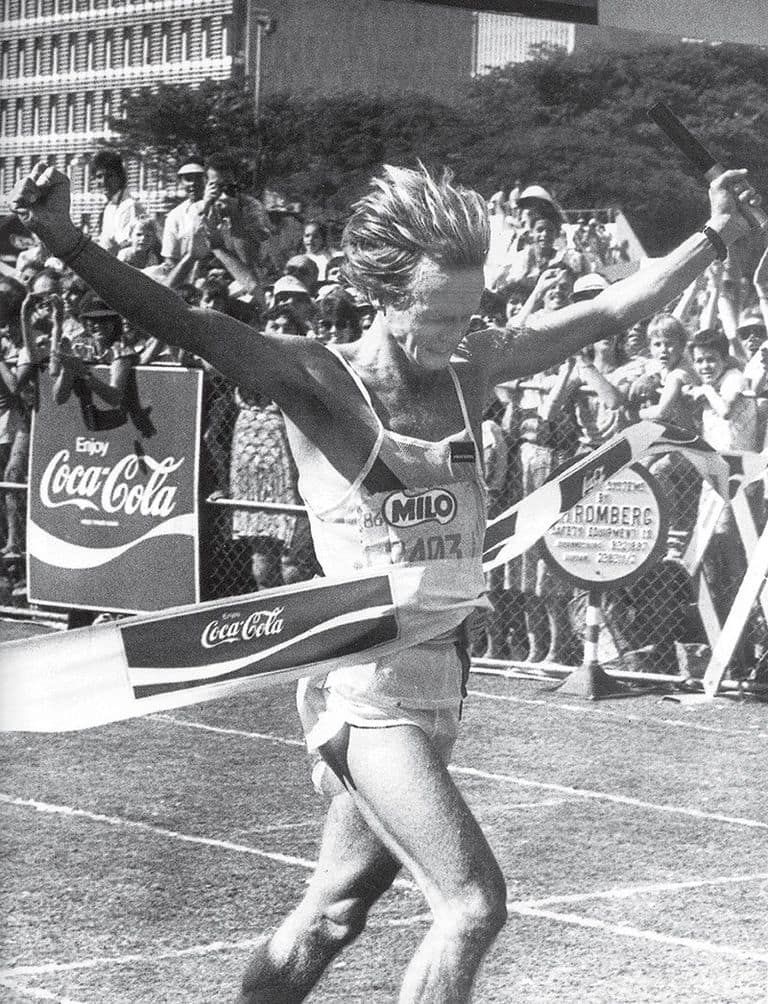
If Comrades had had a way of briefly subverting apartheid, however, ultimately it hasn’t outrun it. Even if Fordyce’s life intersected with many elite black runners on the course, when they left the finish line they quickly drifted back into the vastly different South Africas from which they had come. Today, Fordyce lives in a spacious suburban Johannesburg house. Fluffy purebred dogs pad across his wood floors, and the garden outside is lush and well-tended.
By contrast, Hoseah Tjale, who twice finished second to Fordyce and won South Africa’s other major ultra, the Two Oceans Marathon, returned after his running career to a shack settlement and his job as a delivery driver. Some black elites sank even further into obscurity. In 2010, word spread that Gabashane ‘Vincent’ Rakabaele, the first official black finisher of Comrades and the first black winner of Two Oceans, had died the previous year in his home country of Lesotho. But then a more distressing fact came to light. Rakabaele had, in fact, died almost seven years earlier; 2009 had just been when his grave was discovered.
“It’s bad news,” Fordyce says. “They disappear, and you just can’t find them.”
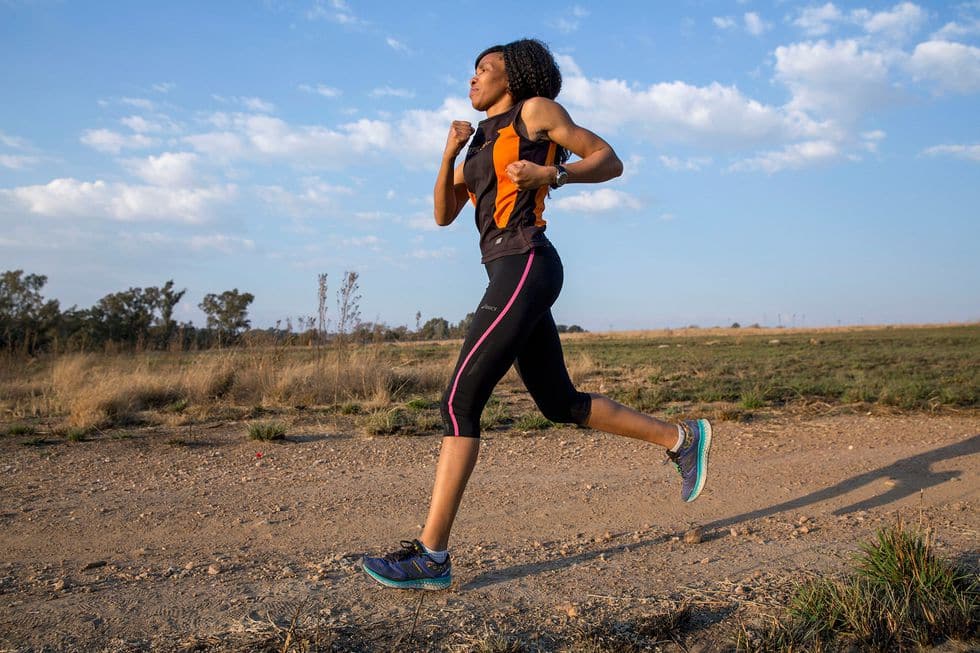
It’s still pitch black out when Sindi and her running mates wake up on 4 June 2017, put on their orange and black Diepsloot jerseys, and walk tensely through the quiet morning to Durban City Hall.
There, they say their goodbyes and good lucks and head off for their starting pens, sorted by qualifying time. In Pen G, Sindi meets a man who tells her this is his sixth time starting Comrades, but that he’s never once finished – and she swallows another wave of nerves and thinks of her kids at home, watching hopefully for their mother on their small TV. A few minutes later, the national anthem begins to play; and afterwards, an old song that migrant workers from villages like hers used to sing as they worked in and travelled home from Zimbabwean mines.
Shosholoza, Ku lezontaba. Moving fast, moving strong, through those mountains.
Wenu yabaleka, Ku lezontaba. You are leaving, through those mountains.
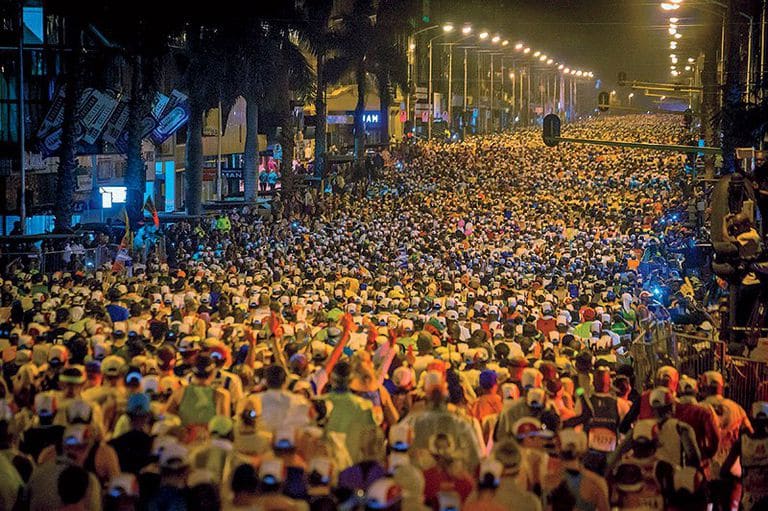
The scene in downtown Durban just before the start of the Comrades Marathon, June 4, 2017. Getty Images
Around her, she hears quiet sniffles – from big white guys who look like rugby players, from wiry middle-aged Indian men, and from a wispy young woman who a few minutes earlier had been cracking a smile in a selfie. And that’s the moment when, for the first time today, Sindi finds herself tearing up, too. Jesus, I’m somewhere, she thinks. This isn’t a normal race.
A few seconds after that, the sound of a man mimicking the throaty cock-a-doodle-do of a rooster pipes out over the loudspeaker, another Comrades tradition. And then, quite suddenly, the race begins.
It will be easy and then it will be hard and then it will be easy again. There will be hills longer than any she has trained on, but there will be more encouragement, too, loud and constant. In the tidy, walled Durban suburbs, she’ll pass microbreweries and farms boasting views of the valleys below, and the cheers will come mostly from white people. But further on, in small, sleepy towns that orbit around a lone general dealer and past vast swaying cornfields and a seemingly endless stretch of chicken farms, she’ll see black and brown and white faces staring at her from the crowd, calling out her name as she passes.
It begins to feel to Sindi that if she stops running, she won’t just be letting down her family and friends watching back home. She’ll be letting down all of the spectators, too.
As she runs, she’ll think often of everyone who’s helped her get here. There’s her six-year-old daughter, Somila, who whenever her mother is having a hard day, likes to tell her elaborate stories about the kind of house she plans to build for her when she’s grown. “A place with an upstairs,” she’ll hear Somila explaining. “A place with a gym where my mom can do all her exercise. A safe place where no-one is going to disturb her.”
There’s her employer, Simonne, a woman who sits across a social divide from Sindi but who she nonetheless sees as being “like family”, who years ago encouraged her to leave her husband and who this year helped raise over R12 000 to cover the cost of new running shoes and gear for Sindi, as well as her trip to Durban. (The money also helped feed her children while she was away.)
Several times, she’ll see runners struggling – strangers, people she has never seen before and will never see again – and she’ll offer them what she can: encouragement, aspirin, a sachet of water. Others will do the same for her. “Pain and joy mix together to yield the Comrades experience,” says Sindi’s teammate Sizo. “The spirit of this race is that you forget for a moment what’s happening in South Africa around you.”
Several times, Sindi will pass buses – the massive, colourful riots of runners that serve as pace groups in South African races. As they chant, dance, and sing, she’ll wonder how they muster the energy. Sometimes she’ll be engulfed by them as they stream past. But she keeps hearing Ali’s words in her head, Run your own race, and she lets them go.
Near the end of the race, a white woman from Fourways, the suburb where Sindi works, will jog up alongside her. On another day, in another place, they’d pass without speaking, a white suburbanite and a black worker. But today, 10 and a half hours into the longest run of their lives, they have a lot in common; and for the next five or six kilometres they’ll hobble along together, talking about the months of training that brought them here, how unbelievable it is to them both that it’s now almost over.
On the race’s notorious final hill, she’ll slow to a walk, and for the first time all day, really take in the scenery all around her – a thunderous crescendo of green hills that the writer Alan Paton once called “lovely beyond any singing of it”.
Before she finishes (in 11:21:10), legs and lungs aching, she’ll think, No-one is making you do this. And those words will push her forward one more step, then another. No-one is making her do this. No landlord.
No children. No boss. No angry ex-husband. In a life neatly fenced in on all sides by obligations, the final kilometres of a long run like this have only one: her own.
“Once you’ve done a Comrades,” Sizo says, “you’ve created history for yourself, which is not easy for most individuals to do.” For Sindi, as she runs, it will feel like that. She’s doing something on the cusp of impossible. And if she can do this thing, maybe she can also learn to drive. Maybe she can move her family out of Diepsloot. Maybe she can finally get that high-school diploma she’s been imagining for so long.
And in that moment, as much as her body will hurt, she almost won’t want the race to end. Because for now, she will realise, for exactly as long as this insane hill and this insane road and this insane race carry on, she is exactly where she, and she alone, has chosen to be.
This article first appeared in the US edition of Runner’s World.
READ MORE ON: comrades-marathon inspiring people motivation



